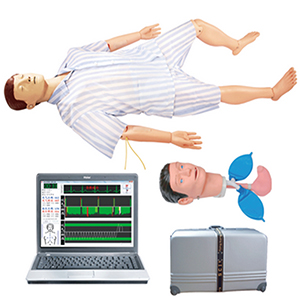

Article tag: Comprehensive Emergency nursing training Simulator| BIX/ALS880| Medical Emergency Training Simulator|
Comprehensive emergency nursing training simulator is undoubtedly a key tool to enhance the practical ability of students. It uses highly simulated, multi-scenario simulation, personalized training and data support to help students better master first aid skills and practice repeatedly in a safe environment. In the future, with the continuous development ...
With the continuous development of medical education, the cultivation of practical ability has become the core part of the education of medical students and nursing staff. Integrated Emergency nursing training simulator (hereinafter referred to as "simulator") as an advanced teaching equipment, with its highly restored physiological structure and a variety of emergency situation simulation, is widely used in the field of medical and nursing training. So, can comprehensive emergency nursing training simulator really improve the practical ability of students? Let's look at this in terms of data, functionality, and teaching effectiveness.

Comprehensive Emergency nursing training Simulator
1. Highly simulated and enhanced skill training
Integrated emergency care training simulators usually have multiple functions, such as simulating airway management, cardiopulmonary resuscitation (CPR), hemostasis, tracheal intubation and other critical first aid operations. Its unique design can simulate the physiological responses of real patients and emergency situations. According to several studies, students trained with simulators can significantly improve their proficiency and accuracy in first aid operations. For example, a study of improved first aid skills showed that participants trained with simulators had a 25 percent increase in success in actual first aid.
2. Reduce mistakes in real situations
In the emergency situation, the accuracy of the operation is directly related to the life and death of the patient. In the case of insufficient experience, students are often prone to making operational errors. Simulators can provide students with a safe platform to practice, avoiding the risks that real patients may encounter. It is pointed out that using simulators for repeated operation training can effectively reduce the error rate of students in clinical first aid. By simulating real emergency situations, students can continuously strengthen their emergency response ability and enhance their confidence in clinical decision-making.
3. Personalized and multi-scenario training
The learning progress and needs of each student are different, and the simulation of comprehensive emergency nursing training can conduct personalized training according to the actual situation of students. Students can choose different difficulty first aid scenarios for training according to their own mastery level, which not only makes the teaching content more flexible, but also enables students to accumulate rich practical experience in a variety of complex situations. For example, simulators can simulate airway obstruction, cardiac arrest, trauma bleeding and other situations, and students can respond to different situations in a timely manner. This simulation training in a short period of time can allow students to accumulate a lot of practical experience, improve clinical resilience.
4. Data support: The teaching effect has been significantly improved
Data is an important criterion to evaluate teaching effect. The study data showed that participants who trained simulators using integrated emergency care generally scored higher on skill tests than those who did not use the device. A survey of nursing students found that after simulated training, the students' first aid skills improved by 32%, including the speed of first aid response and the accuracy of trauma management. This kind of data fully proves that the simulation of comprehensive emergency nursing training plays a significant role in improving the practical ability of students.
5. Teaching interaction and feedback
Compared with traditional teaching methods, simulating human training provides more interactive opportunities. Students can get immediate feedback through real-time interaction with simulators, which not only speeds up the learning process, but also helps students find their shortcomings in practice. Through data feedback, students can understand the problems in the operation, timely adjustment, forming a good learning cycle.
Comprehensive emergency nursing training simulator is undoubtedly a key tool to enhance the practical ability of students. It uses highly simulated, multi-scenario simulation, personalized training and data support to help students better master first aid skills and practice repeatedly in a safe environment. In the future, with the continuous development of technology, this kind of training equipment will play an increasingly important role in medical and nursing education, and become an important guarantee for improving the clinical operation ability of students.